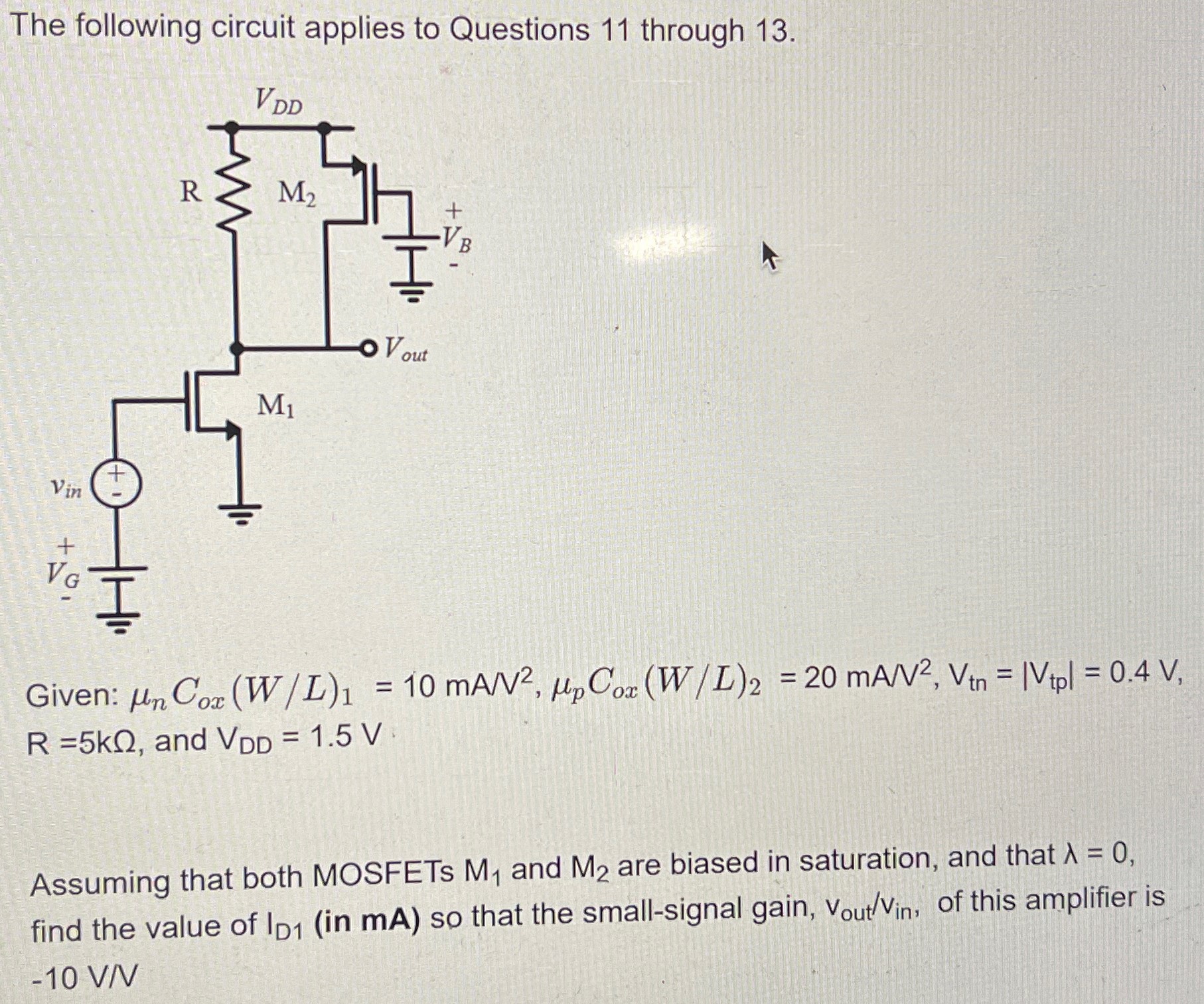The following circuit applies to Questions 11 through 13. Given: μnCox(W/L)1 = 10 mA/V2, μpCox(W/L)2 = 20 mA/V2, Vtn = |Vtp| = 0.4 V, R = 5 kΩ, and VDD = 1.5 V Assuming that both MOSFETs M1 and M2 are biased in saturation, and that λ = 0, find the value of ID1 (in mA) so that the small-signal gain, vout/vin, of this amplifier is −10 V/V.



You'll get a detailed, step-by-step and expert verified solution.
 Work With Experts to Reach at Correct Answers
Work With Experts to Reach at Correct Answers